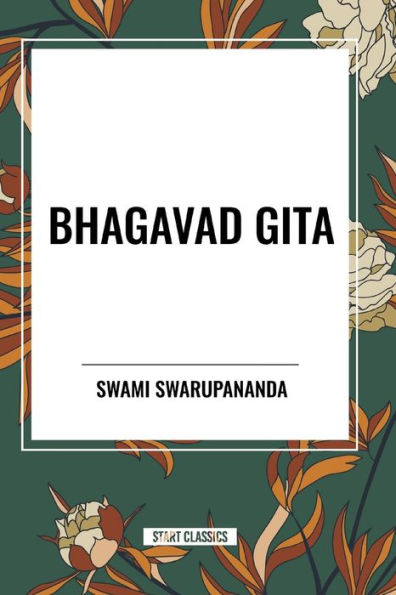5
1


Paperback
$14.99
-
PICK UP IN STORECheck Availability at Nearby Stores
Available within 2 business hours
Related collections and offers
14.99
In Stock
Overview
The Bhagavad Gita which is often referred to as simply the Gita, is a 700-verse Hindu scripture that is part of a Hindu epic. It is a sacred text of the Hindu religion. The Gita is set in a narrative framework of a dialogue between Pandava prince Arjuna and his guide and charioteer Lord Krishna. Facing the duty as a warrior to fight the Dharma Yudhha or righteous war between Pandavas and Kauravas, Arjuna is counselled by Lord Krishna to "fulfill his Kshatriya (warrior) duty as a warrior and establish Dharma." Inserted in this appeal to kshatriya dharma (chivalry) is "a dialogue ... between diverging attitudes concerning methods toward the attainment of liberation (moksha)". The Bhagavad Gita was exposed to the world through Sanjaya, who senses and cognises all the events of the battlefield. Sanjaya is Dhritarashtra's advisor and also his charioteer. The Gita is set in a narrative framework of a dialogue between Pandava prince Arjuna and his guide and charioteer Lord Krishna. Facing the duty as a warrior to fight the Dharma Yudhha or righteous war between Pandavas and Kauravas, Arjuna is counselled by Lord Krishna to "fulfill his Kshatriya (warrior) duty as a warrior and establish Dharma." Inserted in this appeal to kshatriya dharma (chivalry) is "a dialogue ... between diverging attitudes concerning methods toward the attainment of liberation (moksha)". The Bhagavad Gita presents a synthesis of the concept of Dharma, theistic bhakti, the yogic ideals of moksha through jnana, bhakti, karma, and Raja Yoga (spoken of in the 6th chapter) and Samkhya philosophy. It is a Bhagavata explanation of the Purusha Sukta and the Purushamedha Srauta yajna described in the Satapatha Brahmana. Numerous commentaries have been written on the Bhagavad Gita with widely differing views on the essentials. Vedanta commentators read varying relations between Self and Brahman in the text: Advaita Vedanta sees the non-dualism of Atman (soul) and Brahman as its essence, [12] whereas Bhedabheda and Vishishtadvaita see Atman and Brahman as both different and non-different, and Dvaita sees them as different. The setting of the Gita in a battlefield has been interpreted as an allegory for the ethical and moral struggles of the human life. The Bhagavad Gita's call for selfless action inspired many leaders of the Indian independence movement including Bal Gangadhar Tilak and Mahatma Gandhi. Gandhi referred to the Gita as his "spiritual dictionary". Theories on the date of composition of the Gita vary considerably. Scholars accept dates from the fifth century to the second century BCE as the probable range. Professor Jeaneane Fowler, in her commentary on the Gita, considers second century BCE to be the likely date of composition.[15] Kashi Nath Upadhyaya, a Gita scholar, on the basis of the estimated dates of Mahabharata, Brahma sutras, and other independent sources, concludes that the Bhagavad Gita was composed in the fifth or fourth century BCE. It is generally agreed that, "Unlike the Vedas, which have to be preserved letter-perfect, the Gita was a popular work whose reciters would inevitably conform to changes in language and style", so the earliest "surviving" components of this dynamic text are believed to be no older than the earliest "external" references we have to the Mahabharata epic, which may include an allusion in Panini's fourth century BCE grammar. It is estimated that the text probably reached something of a "final form" by the early Gupta period (about the 4th century CE). The actual dates of composition of the Gita remain unresolved.

Product Details
| ISBN-13: | 9798880902569 |
|---|---|
| Publisher: | Start Classics-Nbn |
| Publication date: | 04/09/2024 |
| Pages: | 90 |
| Product dimensions: | 6.00(w) x 9.00(h) x 0.00(d) |
From the B&N Reads Blog
Page 1 of
